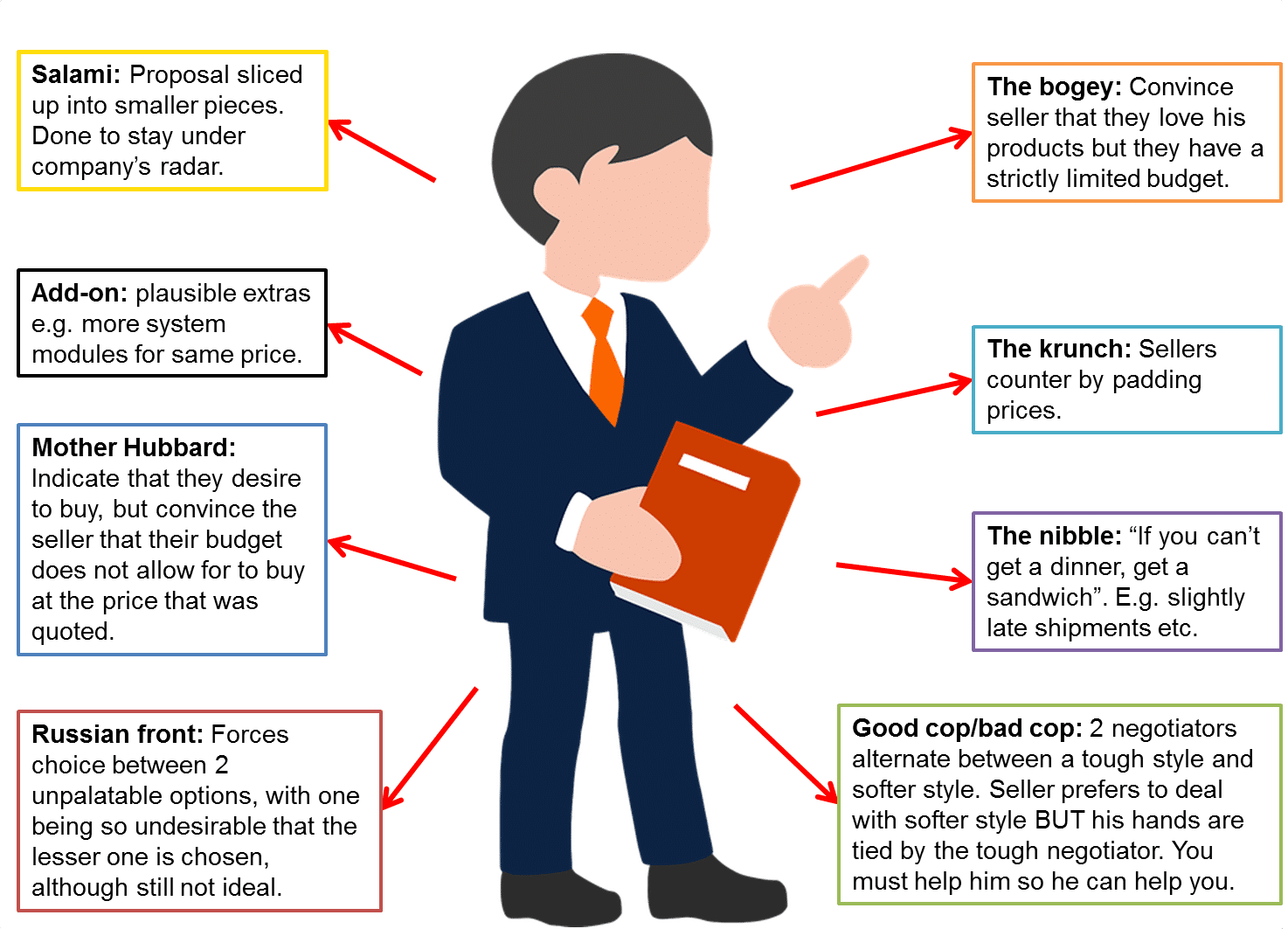Successful negotiation: Streetwise ploys & playing the game in a 3D world
The ability to negotiate is a skill that is imperative in the world of business and IT management. Financial management, and therefore negotiation, is a key part of a CIO's job. Negotiation are essential to successful project implementation within the IT industry that emphasize long-term success and the creation of valuable agreements. In this lecture, streetwise ploys used by both manipulators and successful negotiators will be explored with extra care being made to assist in recognition and management of such tactics, and 3-dimensional negotiation that allows for successful and valuable agreements will be discussed.
Streetwise ploys: Caveat Emptor
" ...the buyer alone is responsible for checking the quality and suitability of goods before a purchase is made."
Avoiding manipulators and manipulative tactics enables negotiators to employ a more 3D approach that allows for long-term success and the unlocking of value post-deal. Recognising and using tactics known as Streetwise ploys during a negotiation is imperative for this process. The figure below shows the various tactics that fall under the Streetwise tactics umbrella.

Manipulators and short-term deal-makers make use of these ploys in order to “win” and ensure that they get what they want out of the deal, paying no mind to the other party/parties involved or long-term value. Manipulators hold the desire to win above anything else and will demand difference splits, threaten, bluff walkouts, set phoney deadlines etc. in an attempt to close their deals. To ensure that one remains a successful negotiator who can combat such manipulators, the long-term value and benefits for both parties must be considered. Although the aforementioned tactics can still be employed in successful negotiations, modifications should be made that allow the sharing of information, the alignment of stakeholders, upholding of realism, and the formation of a working relationship i.e. winning does not trump all as it does for manipulators. These factors, in conjunction with the employment of Streetwise tactics, ensure successful negotiation that promotes long-term success and project implementation within the IT sector.
It is of the utmost importance to envision the goal of the agreement as beyond the discussed finish line e.g. signing of contracts etc. This is what distinguishes short-term deal-makers from successful negotiators who create valuable agreements that carry their value far passed the dictated finish line. The ability to identify and use the various tactics mentioned previously enables successful negotiation and ensures that an agreement can be reached that benefits the negotiator’s side as efficiently as possible.
3D negotiation
The concept of 3-dimensional negotiation involves the identification of barriers within negotiation strategies that function in 3 complementary dimensions. Each dimension incorporates strategies that ensure successful negotiation and are crucial for achieving long-term value from the negotiations being made. The table below illustrates each dimension with their respective focus, common barriers, and approach.

Whilst these dimensions have been identified, literature shows that negotiators and research regarding successful negotiation focus primarily on the first two dimensions without incorporating the third. Whilst this may work in some cases, often it is not sustainable and does not consider long-term value and increased scope.
Let us consider an analogy involving simple 5-card poker. The aim of the game is to collect 5 cards by the end of the game that contain a sequence that represent a group that has an increased chance of winning the game i.e. a strong hand. The stronger the hand, the higher the probability of winning and succeeding in the long-term. Possible simple hands include a pair of the same card, a triplet, or 4 of the same card (the strongest hand, called Poker). This logic can be applied when analysing successful negotiation tactics.
If some parts of the 3D framework are not incorporated, a weaker negotiation strategy (or hand) may be employed and the probability, therefore, of long-term success and value decreases. If, however, the 3D framework is incorporated in its entirety with each dimension being covered and accounted for, the negotiation will be more successful and have a higher probability of succeeding in the long-term i.e. the hand is stronger, possibly a Poker hand since strategies have allowed for the highest, strongest hand to be obtained. This analogy is illustrated in the diagram below.

Conclusion
Successful negotiation is an integral part of the functioning of a business and its IT counterpart. Tactics must be employed that ensure long-term success and value maintenance so that the organisation may flourish and get the most out of the negotiation made. Such tactics include streetwise ploys such as the bogey, the krunch, the nibble, good cop/bad cop, salami, add-on, Mother Hubbard, and Russian front. Each strategy involves the employment of manoeuvres that ensure the best result for the organisation through that negotiation. It is critical to note, however, that once must not adopt a manipulative approach by using these approaches and it is of the utmost importance to be able to identify manipulative behaviour from negotiation partners. Along with the employment of these tactics, information must be shared, stakeholders must be aligned, realism must be upheld, and working relationships must be maintained. This ensures that winning does not become the be-all-end-all and that strategies are employed that benefit everyone and ensure long-term success and value.
To reinforce the approach that promotes extension of the organisation’s vision beyond the “finish line” of the negotiation, a 3D strategy must be utilised. This ensures that all dimensions of negotiation are addressed including tactics, deal design, and setup. Incorporating all these dimensions increases the scope of the negotiation and its success and also ensures that organisation is getting the most out of the negotiation process into which it is entering.
The take-home message, simply put, is: negotiation strategies should include more than just end-game ploys to ensure that long-term success and value is achieved. This is done by modifying existing tactics to avoid and recognise manipulation as well as the incorporation of a 3D approach.
Resources
Lax, D., & Sebenius, J. (November 2003), 3-D Negotiation - Playing the whole game. Harvard Business Review, 65-74.
What is next
Previous Post |
Next post |
IT Budgeting |
Enterprise Architecture |
For all our Modern IT Management Lectures.
For all our Podcasts.
